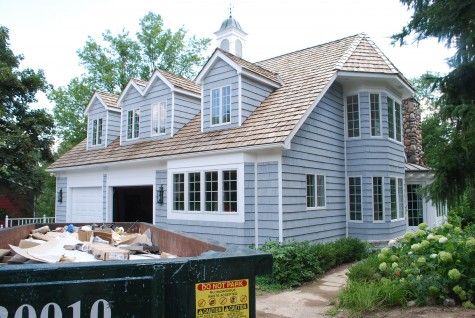 Anyone who gardens has ideas about dirt; I am no exception. I like friable soil that drains readily, and is heavily weighted with compost for good soil retention. Though these two characteristics may seem to oppose one another, they in fact speak to a need for balance. Most plants need a regular source of water, but not swimmingly so. Heavy clay soil stays wet. Clay also makes a great material from which to make pots; when clay soil dries out, it is is so densely hard it repels water. In any case, if you are a root hair, either clay state sounds less than optimal. Liberal amounts of compost can help leaven that soil, but choosing plants that like heavy soil is a very good idea if clay is what you have.
Anyone who gardens has ideas about dirt; I am no exception. I like friable soil that drains readily, and is heavily weighted with compost for good soil retention. Though these two characteristics may seem to oppose one another, they in fact speak to a need for balance. Most plants need a regular source of water, but not swimmingly so. Heavy clay soil stays wet. Clay also makes a great material from which to make pots; when clay soil dries out, it is is so densely hard it repels water. In any case, if you are a root hair, either clay state sounds less than optimal. Liberal amounts of compost can help leaven that soil, but choosing plants that like heavy soil is a very good idea if clay is what you have.
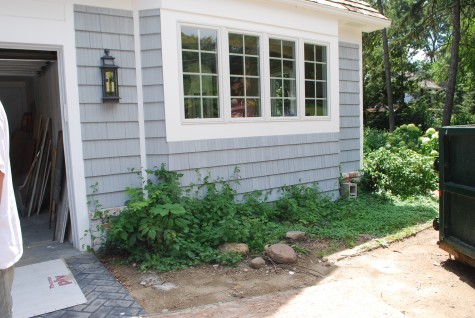 It is is easy to establish plants in a sandy porous soil-provided you are planting grapes, succulents, lavender or rosa rugosa. You will have a very tough time getting peonies or delphiniums to prosper, though it is easy to get them to root. Determining your soil type is important. Loads of compost can improve the texture of any soil, but you would be hard pressed to completely change its character. I do have clients that cook up soil as if it were their most favorite thing to do-and their gardens reflect that. But after you have improved clay soil, you have improved clay soil-not sandy loam.
It is is easy to establish plants in a sandy porous soil-provided you are planting grapes, succulents, lavender or rosa rugosa. You will have a very tough time getting peonies or delphiniums to prosper, though it is easy to get them to root. Determining your soil type is important. Loads of compost can improve the texture of any soil, but you would be hard pressed to completely change its character. I do have clients that cook up soil as if it were their most favorite thing to do-and their gardens reflect that. But after you have improved clay soil, you have improved clay soil-not sandy loam.
 This older home had been completely redone on the inside. The work was not kind to the soil. Pickup trucks, dumpsters and various equipment drove over and parked on that soil for months. Who knows what got dumped on it. Redoing a landscape from scratch requires at least as much time devoted to restoring the health of the soil as planting.
This older home had been completely redone on the inside. The work was not kind to the soil. Pickup trucks, dumpsters and various equipment drove over and parked on that soil for months. Who knows what got dumped on it. Redoing a landscape from scratch requires at least as much time devoted to restoring the health of the soil as planting.
 Shoveling out the weeds and lifting and storing plants that will be saved is the first move. This phase alone is a whomping lot of work. We are not ready for plants yet. The front door of the home is not in front-is is actually located on the east side. The design of the walkway will need to address the 90 degree change of direction, and the relatively long trip to the door.
Shoveling out the weeds and lifting and storing plants that will be saved is the first move. This phase alone is a whomping lot of work. We are not ready for plants yet. The front door of the home is not in front-is is actually located on the east side. The design of the walkway will need to address the 90 degree change of direction, and the relatively long trip to the door.
 The process of installing the stone makes another kind of mess. This phase always pains me, given all the clean up and out that has already been done. But the process of creating a landscape is always quicker and more efficient if if all the hard structure comes first. Working around existing plant material is difficult; inevitably something precious gets damaged.
The process of installing the stone makes another kind of mess. This phase always pains me, given all the clean up and out that has already been done. But the process of creating a landscape is always quicker and more efficient if if all the hard structure comes first. Working around existing plant material is difficult; inevitably something precious gets damaged.
 The mess proved to be well worth enduring; the walk is beautiful. At the juncture of the north leg and the west leg is a terrace. Though the views out the windows to the rear yard are beautiful, the property drops off precipitously. As very little of the rear yard space is useable, this landscape will feature a terrace in the front yard.
The mess proved to be well worth enduring; the walk is beautiful. At the juncture of the north leg and the west leg is a terrace. Though the views out the windows to the rear yard are beautiful, the property drops off precipitously. As very little of the rear yard space is useable, this landscape will feature a terrace in the front yard.
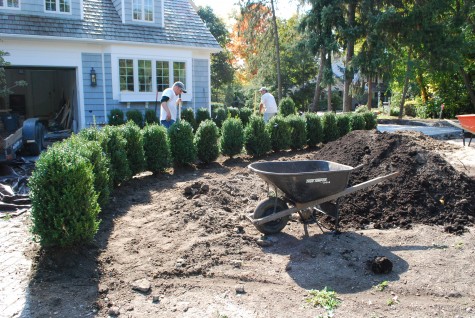 I do not often plant buxus Green Mountain. Its 4′ by 3′ eventual size makes it a tall and narrow growing plant. I wanted this small space to afford my client some privacy. So the plan is to plant tall. Taller plants will screen the view of the drive from the garden, and make the terrace feel more secluded.
I do not often plant buxus Green Mountain. Its 4′ by 3′ eventual size makes it a tall and narrow growing plant. I wanted this small space to afford my client some privacy. So the plan is to plant tall. Taller plants will screen the view of the drive from the garden, and make the terrace feel more secluded.
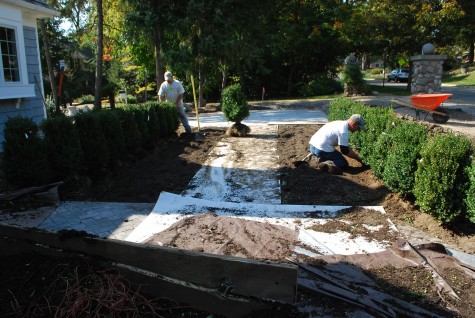 The beds on either side of the walk that will contain smaller plants. The soil in these beds was excavated down some 10 inches; a our own plant mix that contains our own compost. Steve’s long tenure as superintendent of grounds at Grand Hotel made him a compost expert. Mackinac Island has very little topsoil, and bringing soil to the island was very expensive. So we have a considerable pile of great compost available for projects. We mix in some sand, and some worm castings for good measure.
The beds on either side of the walk that will contain smaller plants. The soil in these beds was excavated down some 10 inches; a our own plant mix that contains our own compost. Steve’s long tenure as superintendent of grounds at Grand Hotel made him a compost expert. Mackinac Island has very little topsoil, and bringing soil to the island was very expensive. So we have a considerable pile of great compost available for projects. We mix in some sand, and some worm castings for good measure.
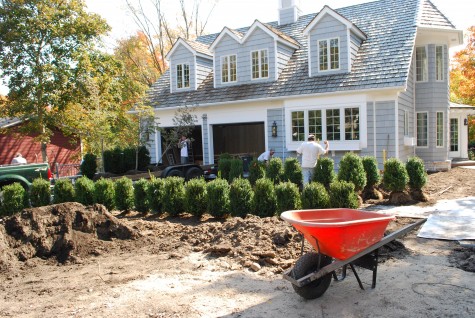
The soil here is actually quite good. I suspect the years the garden had been neglected and the leaves unraked contributed a lot of compost by default. Once dug, the soil had a good hand, and was crumbly. Our main issue was to try to restore some air to the soil. I am encouraged by this-all of the new plants should thrive.